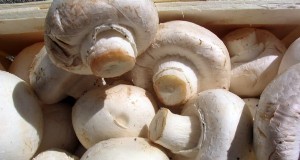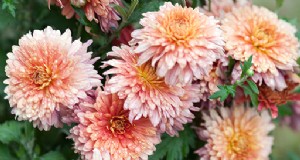Cultivo de plantas ornamentales:
La siguiente información es sobre el cultivo de plantas ornamentales.
¿Qué son las plantas ornamentales?
Las plantas que se cultivan con fines decorativos se denominan plantas ornamentales. Las plantas ornamentales embellecen el área alrededor de su hogar, oficinas etc. Estos son los mejores, los mejores materiales decorativos utilizados al construir un césped o cualquier tipo de jardines y proyectos de diseño de paisajes. El cultivo de estas plantas ornamentales se llama floricultura, que forma parte de la horticultura. Las plantas ornamentales se cultivan con fines de exhibición en lugar de funcionales. Algunos tipos de plantas ornamentales son tanto ornamentales como funcionales. En jardinería ornamental, las plantas ornamentales juegan un papel clave, estas plantas vienen en muchas formas, tamaños y colores que se seleccionan en función de su clima, requisitos de jardinería y paisajismo.
Las plantas ornamentales se clasifican generalmente en 2 tipos, plantas con flores y plantas sin flores. Las flores ornamentales son una característica clave de muchos jardines. Muchos jardineros de flores prefieren cultivar una variedad de plantas con flores ornamentales por sus hermosas flores. Los jardineros seleccionan la variedad de plantas con flores, para que el jardín se llene de flores durante la primavera y el verano. Hay muchas variedades de plantas con flores ornamentales que producen flores que pueden ser sutiles y delicadas, o grandes y algunas producen una variedad de flores vistosas, y algunas plantas producen flores con aromas distintivos junto con colores asombrosos.
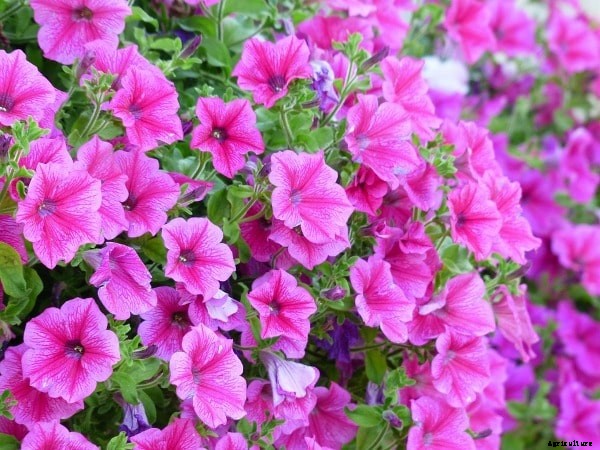 Planta con flores ornamentales.
Planta con flores ornamentales.
Las plantas ornamentales también se clasifican en función de la vida útil, Ornamentales anuales:estas plantas crecen y mueren en un año. Estas plantas completan su ciclo de vida en un año. Ornamentales bienales, estas plantas viven más de un año. Plantas bienales cultivadas en el primer año y florece en el segundo año. Las plantas ornamentales perennes tienen un ciclo de vida de más de dos años, estas plantas florecen todos los años.
Beneficios de las plantas ornamentales:
Estas plantas son - ornamentales y funcionales - estas plantas ayudan a sostener la vida del mundo. Las plantas ornamentales son plantas tanto de interior como de exterior, estas plantas mejoran la estética de nuestros hogares y oficinas y son la mejor opción para hacer nuestro planeta más verde. Algunas variedades de plantas ornamentales son plantas funcionales y son una fuente rica en nutrientes (sentido del gusto), las plantas ornamentales nos benefician de muchas formas.
A continuación se muestran los principales beneficios de las plantas ornamentales:
- Belleza asombrosa:plantas ornamentales, tanto plantas con flores como plantas sin flores, escaladores enredaderas plantas de cobertura, o plantas de jardín:da un gusto visual a los ojos. Incluso los árboles ornamentales proporcionan sombra y algunos actúan como paredes verdes. Pocas plantas transmiten un dulce sentido del aroma y las plantas crearán un paisaje atractivo. Algunas plantas que deletrean aroma son el jazmín, Lavanda, y otros aromáticos, Las flores ornamentales tendrán tanto aroma como apariencia atractiva.
- Jardín con coníferas ornamentales, pinos o las palmas le darán una atmósfera agradable y relajante a su alrededor.
- Las plantas ornamentales son los mejores purificadores de aire naturales. Estas plantas purifican el aire durante la fotosíntesis. Creando un pequeño jardín con macetas interiores o exteriores o incluso colgantes, cestas o contenedores alrededor de la sala de estar con plantas ornamentales aumentarán los niveles de oxígeno en el aire. Los altos niveles de oxígeno en el aire reducirán el estrés corporal y los problemas respiratorios y le brindarán una mejor salud.
- Crea un ecosistema propio:cultivar plantas ornamentales te ayudará a crear un ecosistema asombroso. Agentes polinizadores como insectos, aves, murciélagos etc. serán visitantes constantes a los jardines que agregan un encanto natural a su jardín.
- Las plantas ornamentales evitan la erosión del suelo. Los pastos ornamentales que vienen en muchas texturas que se utilizan para el paisajismo ayudarán a prevenir la erosión del suelo. Árboles ornamentales como pinos, abetos sauces etc. son buenos para jardines en las laderas.
- Plantas ornamentales para la concentración:Plantas ornamentales de la naturaleza delimitadas con aroma y belleza que creían que mejoraría la concentración. Muchos estudios han demostrado que los estudios que tienen algunas plantas dentro y alrededor de las casas, oficinas y las escuelas mejorarán los niveles de memoria y concentración.
- Plantas ornamentales para reducir el estrés:muchas personas creen que el cultivo de plantas de interior en oficinas u hogares reducirá los niveles de estrés y los refrescará con su atractivo y olor.
- Ornamental para nuestro estado de ánimo:una mirada a una flor en flor o una palmera que se balancea aumentará el cociente de felicidad. Muchos estudios sugieren que los ejercicios físicos y las actividades recreativas deben realizarse en el regazo de la naturaleza, entre plantas y flores. Está teniendo un gran impacto en los cambios de humor.
- Las plantas ornamentales limpian el aire:las plantas son las mejores máquinas que limpian el aire que respiramos. Las plantas ingieren dióxido de carbono como alimento y liberan oxígeno limpio, Las plantas son los mejores filtros de aire. Principalmente para ambientes interiores, donde la circulación del aire es más compacta que en el exterior. El cultivo de plantas ornamentales mejorará los niveles de oxígeno en el aire y limpiará el aire del humo del tabaco y los compuestos orgánicos explosivos como el formaldehído. tricloroetileno y benceno. Algunos ejemplos de plantas ornamentales que limpian eficazmente el aire son la planta araña, potos dorados, paz Lily, planta de serpiente y varias especies de filodendro y Dracaena. Una planta más sana es, el más eficaz para eliminar las toxinas dañinas en el aire.
- Plantas ornamentales para remedios caseros:Algunas plantas ornamentales son comestibles, raíces, sale de, tallos, o flores de algunas plantas como la caléndula, La lavanda, etc. tienen muchos valores medicinales.
- El calentamiento global es un problema más grave que el que preocupa al mundo en estos días. La contaminación es la causa fundamental del calentamiento global, cambio climático, y desastres naturales. Para superar estos problemas, las plantas son la mejor solución. Aparte de estas plantas ornamentales mejorará el encanto y la elegancia de su hogar y un jardín en crecimiento con plantas ornamentales o comestibles de su interés cosechará los beneficios y contribuirá a un planeta más verde.
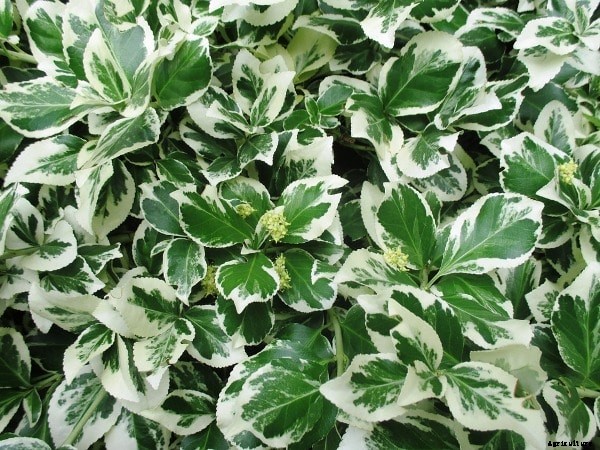 Beneficios de las plantas ornamentales.
Beneficios de las plantas ornamentales.
Tipos de plantas ornamentales:
El concepto principal de las plantas ornamentales es embellecer el paisaje. Estas plantas se ven muy bonitas y no todas las plantas producen frutos o follaje comestibles. Las plantas ornamentales se cultivan por su increíble belleza y su asombrosa fragancia para estimular los sentidos. Hay diferentes tipos de plantas ornamentales, árboles, arbustos anuales, plantas perennes cubiertas del suelo, pastos y bulbos. Hay muchas variedades de plantas ornamentales que brindan una amplia gama de opciones según las condiciones climáticas y las posiciones del paisaje.
Cultivo de plantas ornamentales:árboles ornamentales
Estos son hermosos árboles que se pueden cultivar en el paisaje de hogares y jardines. Hay muchas variedades de árboles ornamentales, simplemente no proporcionan frutas, pero solo danos follaje y flores atractivos. Muchos jardineros eligen árboles ornamentales como cerezos y cornejos que producen flores primaverales. Estas plantas agregan belleza al paisaje o los jardines con su exhibición floral y brindan un buen refugio.
Algunos ejemplos de árboles ornamentales son el arce japonés, El sauce llorón y el abedul son las variedades de árboles ornamentales que no florecen. Los árboles ornamentales que florecen son magnolia, pera, cereza, manzana y lila. Y todos los árboles ornamentales perderán sus hojas durante la temporada de invierno y brotarán nuevos brotes en primavera.
Cultivo de plantas ornamentales - Arbustos ornamentales
Los arbustos son plantas ornamentales tupidas que vienen en muchos tamaños, desde plantas fronterizas bajas hasta imponentes arbustos de hoja perenne. Los arbustos ornamentales son plantas de hoja perenne o de hoja caduca, estas plantas son variedades tanto florecientes como no florecientes. Los arbustos se eligen según la cantidad de cualidades ornamentales. Los arbustos en flor también son una buena opción, pero el follaje puede ser la mejor opción para el paisaje.
Algunos ejemplos de arbustos ornamentales:Weigela, bérbero, camelia, lila y brezo son algunas variedades populares. Y la mayoría de los arbustos ornamentales son de hoja caduca.
Cultivo de plantas ornamentales - Plantas ornamentales con flores:
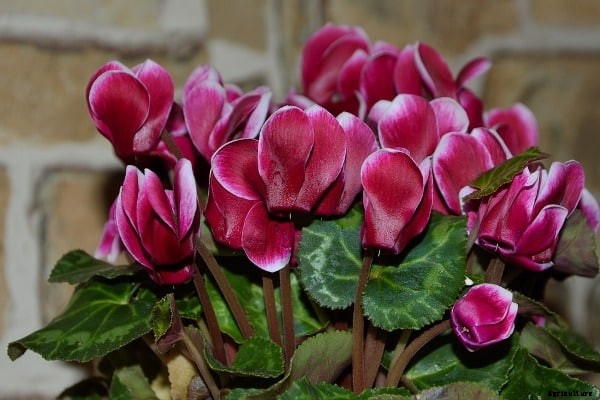 Planta con flores ornamentales.
Planta con flores ornamentales.
Las plantas con flores ornamentales son bien conocidas por sus hermosas flores y son la mejor opción para interiores, Jardines exteriores y verticales. Las plantas con flores ornamentales se clasifican en plantas con flores anuales y plantas con flores perennes. Estas plantas producen flores atractivas con aromas increíbles.
Algunas plantas con flores ornamentales son:rosas, sampaguita, ilan-ilang, orquídeas crisantemos, callalilies y champaca.
Cultivo de plantas ornamentales - Hierbas ornamentales:
Los pastos ornamentales son ornamentales o de bajo mantenimiento y le brindan una impresionante exhibición de follaje. Hay cientos de variedades de pastos que van desde matas de tamaño de 6 pulgadas de alto hasta columnas imponentes de cañas gruesas. Algunas variedades de hierbas ornamentales producen flores hermosas y coloridas durante la temporada de crecimiento. Las hierbas ornamentales necesitan un buen cuidado, necesitan un buen riego y se requiere una poda regular.
Cola de zorra del prado, bambú, hierba de caña, hierba de la pampa, juncia, festuca azul, papiro, La hierba de fuente son algunas variedades de hierbas ornamentales que se utilizan para decorar su paisaje. Todas las hierbas ornamentales son de hoja perenne.
Cultivo de plantas ornamentales - Hierbas ornamentales:
Las hierbas ornamentales son plantas aromáticas y algunos ejemplos de hierbas ornamentales son lavanda, sabio, menta y caléndula. Estas hierbas ornamentales se propagan para usos culinarios y de aromaterapia. Algunas hierbas ornamentales comestibles son el tomillo, albahaca y romero. Estas plantas agregan sabor a sus recetas y deletrean un aroma increíble alrededor del área de jardinería.
Cultivo de plantas ornamentales - Bulbos ornamentales:
Los bulbos ornamentales son plantas con flores que producen flores ornamentales en la primavera. Las plantas ornamentales de bulbo agregan belleza al paisaje por un período corto. Los bulbos ornamentales que florecen en primavera son diferentes de los bulbos que florecen en verano. Los bulbos que florecen en verano pueden prosperar en el calor del verano y producir flores atractivas durante la temporada de crecimiento.
Lirios tulipanes narcisos y plantas de cebolla son algunas variedades de plantas ornamentales de bulbo.
Cultivo de plantas ornamentales - Coníferas:
Las coníferas son árboles y arbustos ornamentales de hoja perenne, y estas plantas permanecen verdes durante todo el año. Estos son los ornamentales más populares por su atractivo color que agregan una belleza asombrosa al paisaje en todas las estaciones.
Algunos ejemplos de coníferas son el abeto, cedro, y enebro.
Factores a considerar en el cultivo de plantas ornamentales:
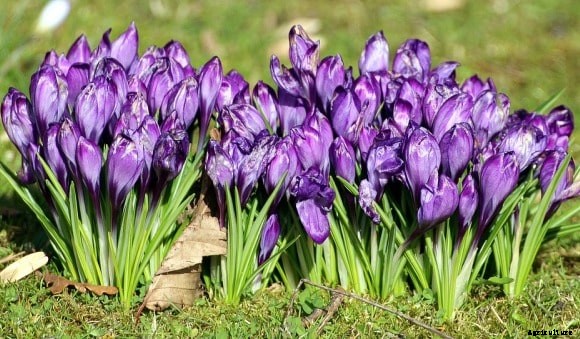 Condiciones de crecimiento para plantas ornamentales.
Condiciones de crecimiento para plantas ornamentales. - Cultivo de plantas ornamentales:la mejor ubicación para el cultivo de plantas ornamentales :Plantas ornamentales cultivadas en interior, al aire libre en cualquier lugar. Las plantas ornamentales son plantas de jardín que se cultivan en el paisajismo alrededor de los edificios, y en parques; y también son las mejores plantas en macetas que se cultivan tanto en interiores como en exteriores.
- Cultivo de plantas ornamentales:ubicación ideal :Puede crear una pantalla de ropa de cama tanto en interiores como en exteriores. O estas plantas se pueden cultivar como borde para el césped, estas plantas son muy adecuadas para macetas colgantes y muchas variedades de flores ornamentales se utilizan para decorar interiores y exteriores. Estas plantas también son adecuadas para crecer en el alféizar de una ventana, un patio o en un jardín con una multitud de camas en capas, La jardinería ornamental es la mejor opción para crear un sentido de orgullo y expectativa. coloreando las estaciones con estilo y definición.
- Cultivo de plantas ornamentales - Suelo para plantas ornamentales: Para el cultivo de plantas ornamentales, el suelo juega un papel fundamental. Estas plantas no crecen bien en suelos mal drenados, estos suelos pueden causar enfermedades a las plantas. No elijas el suelo arcilloso, Los suelos arcillosos sofocarán el sistema de raíces y matarán una planta. Y elija un sitio libre de contenido plástico, libre de químicos, y debe estar libre de materiales de construcción. En caso de suelo mal drenado, Prepare un lecho grueso de suelo bien drenado. En caso de suelos extremadamente pesados, construir un lecho elevado con suelo bien drenado, hasta 13 a 19 pulgadas de alto, con la pendiente de los lados del lecho lejos de las plantas para evitar el anegamiento. La mayoría de las plantas prefieren un suelo bien drenado con niveles de pH de 6 a 7, el suelo debe ser de ácido a alcalino.
- Cultivo de plantas ornamentales:cómo seleccionar las plantas adecuadas: seleccione las plantas ornamentales según el clima local y la duración de las lluvias. Y el sitio debe estar expuesto al sol / sombra. La selección de plantas también depende de la capacidad de drenaje del suelo y los niveles de pH.
- Cultivo de plantas ornamentales - Temperatura para plantas ornamentales: Las plantas ornamentales crecen bien a todas las temperaturas. La temperatura ideal para plantas ornamentales es de 25 a 35 grados.
- Cultivo de plantas ornamentales - Fertilizantes para plantas ornamentales: Se requiere fertilización regular para plantas ornamentales. Use fertilizante de uso general o de jardín para alimentar plantas ornamentales. Estos fertilizantes de jardín vienen en muchas formas concentrados líquidos, cristales solubles en agua, fertilizantes de liberación lenta, etc. podemos utilizar cualquier forma de abono para plantas ornamentales. Los fertilizantes difieren en el contenido de nutrientes y la duración de la liberación. El tipo de fertilizante debe basarse no solo en su costo, sino también sobre los tipos de plantas ornamentales y el contenido de nutrientes del suelo, y el tipo de crecimiento deseado de las plantas. Se prefieren los fertilizantes líquidos o solubles en agua para plantas perennes herbáceas. Para ornamentales leñosos, use fertilizantes granulares de liberación lenta. El propósito más general debe tener niveles de NPK en la ración de 10-10-10 o 12-4-8. Usar fertilizantes orgánicos también es una buena opción. Los mejores fertilizantes orgánicos para plantas ornamentales son la harina de huesos, harina de semilla de algodón y abonos animales.
- Cultivo de plantas ornamentales - Requisitos de riego para plantas ornamentales: La mayoría de las plantas ornamentales necesitan un nivel de riego medio. Algunas plantas como las anuales, herbáceas perennes, las azaleas y el rododendro necesitan más agua que otras plantas ornamentales. Riegue las plantas solo en la base, dependiendo del requerimiento de cada planta. Use una manguera de mano, riego por goteo o por goteo, microaspersores, o una manguera de rezuma para regar las plantas ornamentales. Los requerimientos de agua de las plantas dependen del tipo de plantas ornamentales, suelo y niveles de humedad del suelo y el clima. El mejor momento para regar las plantas ornamentales es por la noche o temprano en la mañana. Hasta un 30 por ciento del agua aplicada durante el mediodía puede evaporarse debido al calor.
- Cultivo de plantas ornamentales - Acolchado para plantas ornamentales: Los mantillos están en jardinería ornamental. El mantillo ayuda a mantener la humedad y previene el crecimiento de malezas. El acolchado aísla las raíces de las plantas de las fluctuaciones de temperatura durante el verano y el invierno. El mejor mantillo utilizado para plantas ornamentales es orgánico, mantillo de textura fina como paja de pino, mini pepitas de corteza de pino, astillas y pajitas de madera dura. Las hojas secas también son el mejor mantillo natural. Puede utilizar mantillos inorgánicos como roca, grava y mármol y estos mantillos inorgánicos son los mejores aislantes del suelo, y absorben el calor del suelo y absorben el agua de las plantas. Hacer mantillo de hasta 3 a 5 pulgadas de profundidad o un pequeño anillo de mantillo alrededor del tronco también funcionará hasta cierto punto. Los mantillos orgánicos como la paja de pino o la corteza de pino que se descomponen se descomponen en el suelo y agregan los nutrientes necesarios a las plantas.
Cultivo de plantas ornamentales:las mejores plantas ornamentales para jardinería vertical:
En jardines verticales, podemos cultivar una amplia gama de plantas ornamentales; algunas plantas ornamentales son comestibles, algunas plantas ornamentales utilizadas principalmente con fines decorativos, y algunas plantas ornamentales se cultivan tanto con fines decorativos como funcionales. Los jardines verticales son la mejor solución para un área compacta de jardinería en áreas urbanas. Las plantas ornamentales no solo se cultivan en el sentido estético del lugar, sino que también hacen que su área sea ecológica.
Helecho espada: This is the best and most commonly opted ornamental plants for vertical gardening. These ornamental plants can be grown in hanging baskets or on living walls. Grows up to 4-5 feet.
- Scientific name:Nephrolepisexaltata
- Climate Requirements:these plants need medium light to complete shade; these plants thrive in temperatures ranging from 25 – 30 degrees.
- The pH range of the soil should be between 7-8.
- Water Requirements:Soil should be kept moist constantly.
Golden Pothos or Money plant: these ornamental plants are a vining plants, the best option for vertical gardening. These plants don’t require much care and grows quickly, easily and it spreads over a wide length of the wall. Grows up to 20 feet height.
- Scientific name:Epipremnumaureum
- Climate Requirements:These plants thrive week in complete shade to medium light. And grows well in humid areas.
- The pH range of the soil should 6.0-7.5 and soil should be fertile and loamy.
- Water Requirements:These plants should be watered once in a week.
- Height:grows up to a length of 20 feet.
English ivy: these are hardy evergreen hardy ornamental plants. These plants spread itself by aerial roots to the walls or any other surfaces. These ornamental plants grown for their lush foliage. Grows up to 20-90feet.
- Scientific name:Hedera helix
- Climatic Requirements:Grows well in full to partial sun and thrive in temperatures ranging from 20-30 degrees.
- These ornamental plants require loamy acidic and alkaline in nature.
- Water Requirements:these plants need moderate watering.
Giant lilyturf: These ornamental plants spread with strap-like leaves that are glossy and dark green. These plants are famous for its dense green foliage, these plants produce flowers during the summer and these flowers are quite showy. Grows up to 4 feet tall.
- Scientific name:Liriope gigantea
- Climatic Conditions:These plants require full-sun to full-shade; thrive well in temperatures ranging from 25 to 35 degrees.
- The pH level of the soil should be neutral to acidic, and soil should be loamy or clayey soil. Soil:well-drained loamy or clayey soil.
- Water Requirements:These plants need regular watering during growing season.
Philodendron: These ornamental plants should be grown easily, and these plants will show the signs what these plants exactly need. These plants grow up to 10-20 feet.
- Scientific name:Philodendron scandens
- Climate Requirements:These plants grow well in bright sunlight. Indirect sunlight; temperatures should be from 30-35 degree Celsius.
- The pH level of the soil should be ranging from 6.0-6.5.
- Water:while watering philodendron plants, allow the top inch of the soil to dry out between watering.
Growing Ornamental Plants – Geranium varieties: These are blooming ornamental plants, with deep reds, scarlet, pinks, blanco, púrpura, etc. colored flowers and the plant blooms entire gardening season. These plants grow up to 12 inches tall.
- Scientific Name:Geranium dissectum
- Climatic Conditions:Grows well in bright to medium light and thrives well in temperatures between 20 to 30 degree celsius.
- These plants require well-drained soil with a pH level ranging from 6.0-7.5.
- Water Requirements:These plants are drought tolerant and need occasional watering.
Wedding vines: these are best decorative ornamental plants suits well for wedding decorations. These plants are grown vertically and blooms beautiful pure white, waxy, intensely fragrant flowers. Grows up to 6 feet height.
- Scientific l name:Stephanotis floribunda
- Climatic Requirements:Grow well in medium light and temperature should be ranging from 25 to 30 degrees.
- These plants required high content of loam and peat moss to thrive.
- Water Requirements:Deep watering should be done at constant intervals.
- Height:grows up to 6 feet or more.
Peace lily: Peace lily ornamental plants more suitable for vertical garden, these plants grow very quickly and are very easy to grow. These plants grow up to 2 feet height. These plant blooms with a bunch of white flowers.
- Scientific name:Spathiphyllumwallisii
- Climate requirements:grow well in bright to medium light; thrive well in temperature between 22-25 degree celsius.
- Water Requirements:these plants should be watered once a week; the leaves of the plants should be sprayed with distilled water throughout the summer growing season.
Star jasmine: These are evergreen ornamental plants and are easily trained on a trellis. These plants grow up to 3 to 9 meters. And blooms white colors, flores.
- Scientific name:Trachelospermumjasminoides
- Climatic Conditions:grows well in partial to full sunlight.
- Water Requirements:Requires medium watering.
English lavender: these ornamental plants are evergreen herbs, thrives in summer and dry weather. These ornamental plants are functional and decorative plants. Grows up to 1-2 meters height. Produces lavender color blooms.
- Scientific name:Lavandula
- Climate Requirements:thrives well in full sun; these can resist temperature between 20 to 25 degree celsius.
- These ornamental plants require neutral to alkaline soil.
- Water Requirements:these plants require regular watering.
Growing Ornamental Plants – Tips for growing Ornamental plants indoors:
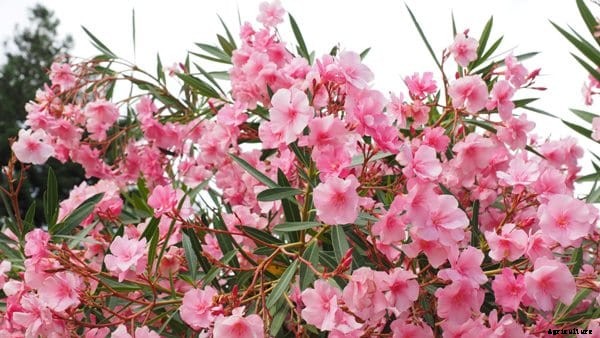 Tips For Growing Ornamental Plants.
Tips For Growing Ornamental Plants.
Many gardeners feel exciting in growing plants in indoors. There are many eye-popping varieties of ornamental plants that grow well inside the house. Best ornamental plants that grow indoors are orchids, bougainvillea, scented geraniums, exotic begonias, pentas, and gardenias. These tropical ornamental plants will bring will make your house green, but also add both color and fragrance to your home. Below are some tips for growing ornamental plants indoors.
- Soil: For indoor plants, soil used depends on the types of the plant’s. The plants like cactus, succulents and rosemary need well drained soil. And ornamental plants like African violets and ferns thrive well in high humus content soil. And other plants like orchids need fir bar or sphagnum moss to thrive. Using a commercial potting mix is highly recommended which is composed of peat moss, vermiculite and perlite. The Soilless potting soil is highly recommended, but these soils absorb more moisture and they need a constant supply of water.
- Organic Matter: Adding organic matter like leaf mold, natural compost, turba, compost, or rich garden soil will improve the microorganisms and nutrient in the soil.
- Temperatura: To keep the plants healthy and beautiful you should maintain an ideal temperature arrange. This temperature range will maximize the plant growth. For most fast-growing annuals ornamental plants, a good initial temperature range should be maintained between (21.1-26.6°C). Some ornamental plants prefer high temperature. This temperature range will show great impact on the blooming and growing stage.
- Humidity: the most indoor plants love humidity. Normal ornamental plants need 50 percent or higher humidity and even can thrive at 30 to 40 percent of humidity in the air. If the air becomes dry and when the leaves unable to absorb enough water their leaves turn pale and yellow. In winter the humidity levels in air fall low, in that case use an air sprayer or other humidifiers to balance the humidity levels. Or can place your plants on a gravel-filled tray that contains about 1/4 inch of water. This maintains the humidity levels in the air around the plants.
- Agua: Indoor plants should be watered at regular intervals. Overwatering the plants can harm the indoor ornamental plants or even some plants die due to overwatering. Indoor plants will require frequent watering during sunny and warm weathers and reduce water during winter and rainy seasons.
- Nutrients: Indoor ornamental plants are not heavy feeders. Just feed them occasionally. A standard 10-10-10 formulation is the best choice most indoor plants.
- Light for indoor Ornamental plants: each plant has different light requirements. Some grow well in complete shade and some need complete 12 hours of light. Depending the light requirements of the plants use grow lights or keep them near windows where they get necessary light. Most flowering plants, and foliage plants are sun-loving so place them near a sunny, south-facing window. During the winter months, move all the plants closer to windows to compensate for the decrease in light. Most plants thrive well in 12 to 16 hours of light per day. To increase the plants you need to provide supplemental lighting provision.
Growing Ornamental Plants – Best Ornamental Plants for Indoors:
Growing Ornamental Plants – Indoor Ornamental Plants:
Looking to add a touch of green to your home? Growing indoor plants in your home has many advantages s – these plants can provide you fresh air and enrich our homes with their beauty and amazing scent will improve our quality of living and these indoor gardens will keep our mood and mind peaceful. For growing ornamental plants in indoor the first step is to choose the right plants that suits your home environment. And not all the ornamental plants thrive in indoor climate and should they need basic care and watering.
Here’s a list of low-maintenance indoor plants in India you can choose from.
- Snake plant: these indoor ornamental plants are the best house plants that can purify the air. And these plants are easy to maintain and can thrive in complete shade and it can inhale the heavy toxins and chemical in the air and increase the oxygen levels in the air.
- Money plant :These plants are the most popular indoor plants seen in every home. And these plants can grow in the soil and water and can grow in indoors and outdoors. The money plants are the best air purifiers and are also considered as the best sign got peace and prosperity as per the FengShui principle.
- Lucky bamboo plant: These are the best plants that it seen in almost all the living rooms. These plants grow well near a window in indirect sunlight, these bamboo trees can be grown in both water and soil. If growing them in water, water should be changed constantly. These plants need constant pruning and these plants can be given many shapes. These are best decorative plants.
- Aloe Vera: Aloe Vera Is the most common ornamental plants that not only used to beautify the house but these plants are also functional. These plants have many medicinal properties. These plants don’t need any care and can be grown anywhere in the house. These plants are also called miracle plants for its amazing health benefits. A sunny window is the best place to grow these ornamental plants.
- Peace Lily: these indoor ornamental plants not only have great foliage, but also have amazing smell, peace lily can enhance the beauty of the house and increase quality of air and adds sweet smell in the house. These indoor ornamental plants need medium sunlight are easy to maintain and need very little care. These plants need medium watering levels and these plants produce beautiful flowers round the year.
- Dracaena reflexa :these ornamental indoor plants best for house decoration. It suits well for decorating a side table or mental-piece. These plants are slow- growing ornamentals gives your home an amazing look with its bright colored green, lime and yellow leaves.
- Ferns: these are foliage plants with a verdant green canopy of leaves, ferns are most preferred indoor plants around the world. And the plants need moderate levels of sunlight and moisture level soil to thrive. Watering the plants daily and misting the leaves will keep the plants healthy and green.
- Grape Ivy: This is the best container grown ornamental plants, a vined plant like grape ivy can give an aesthetically lovely and amazing look to your house. These plants are easy to maintain and don’t need any care, it just grows anywhere in the house, and thrives even in a low light conditions. And these plants need medium water requirements and acts as great air purifiers with amazing look.
- Anthurium: It is a beautiful indoor ornamental plant which blooms nearly round the year and easily grown in indoors with very low maintenance. These plants come in a wide array of colors and maintaining them indoors is very easy. The plant needs indirect sunlight and moderate but regular watering.
- Areca Palm: These house plants come with lush green, attractive fronds, Areca palms best decorative plants for home interiors. These plants thrive well in indirect sunlight to medium shade, ideal place for these plants are south or west facing window. These plants need regular watering and re-potting every year, these plants grow up to 7 feet.
- African Violets: African violets are best flowering house plants are compact which bloom a wide variety of flower forms in many colors. And these plants need good watering, alta humedad, and bright light to complete shade and produces several blooms every year. These plant blooms round the year.
- Poinsettias: Poinsettias are the best and most popular ornamental plants, and these plants are mainly flowers during the Christmas. There are many poinsettia varieties, and this plant produces flowers in pink and white colors, and the standard red poinsettia is still the king of Christmas plants.
- Peperomia: These are waxy ornamental plants are the best to grow, and these plants thrive in more humid conditions. And these plants species can also thrive under the fluorescent lights.
- Dragon Tree: These plants can be grown in your windowsill and can thrive in low-light in an unloved corner. These plants are toxic to animals.
Read Rose Farming.
Read Organic Farming Advantages.






